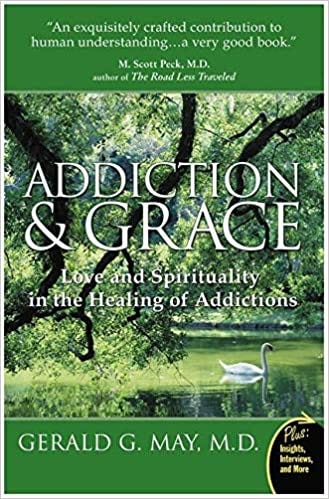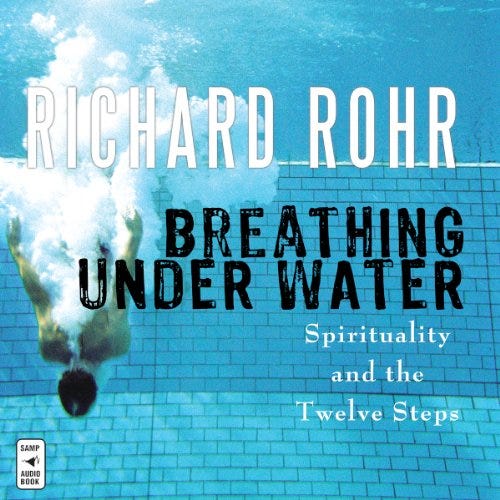I think we should rename January 1st “Self Loathing Day.”
I woke up that morning, hobbled to the bathroom (cause my back is killing me from being so sedentary these last months), got on the scale and saw a number I’d never seen before. I began trolling amazon for at home gym equipment and detox kits. I read all the obligatory articles about “What makes a resolution successful” and all the “You’re fine just as you are” posts. They both tend to create the same thing in me.
As someone dominant in type 7 of the Enneagram of Personality, my passion is gluttony. I avoid pain by escaping into pleasure, fun and most of all my imagination. My 50 year old self is much better at balancing this than my 20 year old or even 40 year old self has been. And that’s good. But here’s the thing - I’m not someone who chooses pain. You may say, who is? I KNOW A LOT OF PEOPLE WHO THRIVE ON IT. The accomplishments of painful discipline motivate lots of people. Just not me. And maybe not you either.
But—
I’ve quit drinking diet soda.
I’ve quit smoking.
I’ve logged more hours on my meditation mat in the last few years and less time on my phone.
I’ve let go of unhealthy attachments in relationships making them healthier and more enjoyable.
I feel a deeper sense of meaning and purpose than I ever have before.
And here’s what I know: I didn’t do any of these things by depriving myself of anything. Only by adding things to my life. Lime Bubly was a great substitute for Diet Coke. I was addicted to that cigarette that brought me on my front porch to sit outside and enjoy the neighborhood. Reclaiming that space with a great book or a podcast and cup of coffee (or glass of wine) helped to break that cycle. (I know that oversimplifies breaking the addiction. Apologies.)
And the deeper, more soul focused efforts, were only attained through adding one thing - awareness.
In Gerald May’s brilliant book Addiction and Grace: Love and Spirituality in the Healing of Addictions, he talks about two kinds of addictions - the addiction of attraction and the addiction of aversion. Addictions of attraction are those that lead us TO something.. the most obvious ones being alcohol, drugs, food, sex, codependency. But addictions of attraction also include things like approval, attractiveness, comparisons, depression, happiness, humor, money, performance, talking, winning and worthiness. (just to name a handful) Addictions of repulsion, he says, are the darker side of our human desires. Rather than the pleasurable side of desire, it is an addiction to avoid the things we can’t stand. These we call phobias, prejudices or biases. An example of an aversion addiction is anorexia nervosa or the compulsive avoidance of food. He says, “Instead of withdrawal symptoms, the distress we experience when we lose something, there are approach symptoms, feelings of panic, fear or disgust when we get too close to that which we abhor.” Some other examples of aversion addictions are anger, boredom, commitment, conflict, guilt, rejection, success, and pain. (ahh.. there I am.)
But isn’t it good to be addicted to worthiness and compulsively avoid, say anger? Certainly, May says, some addictions bring more destruction than others, but the answer is unequivocal “no addiction is good, no attachment is beneficial.”
“But if we accept that there are differences in the degree of tragedy imposed upon us by our addictions, we must also recognize what they have in common: they impede human freedom and diminish the human spirit.”
We are all impeded by addictions to some extent. Most of us, however, are unaware of the addictions that we carry. You are probably well aware of your smoking addiction or your love of one too many donuts on Sunday morning. While these things aren’t healthy - they’re not insidious. The insidious addictions are the ones that we keep secret even from ourselves. And yet, on January 1st it’s so much easier to focus on the cigarette or the donut than it is to mine the depths to find what may be the root cause of that cigarette or donut and, more so, what it is that diminishes our spirit.
This is why alcoholics don’t stop going to meetings once they stop drinking. Stopping the addictive behavior is the tip of the proverbial iceberg. One goes to meetings to hunt for what’s below the surface. To bring a greater awareness to the entirety of your life. It’s not a design to stop drinking, it’s a design to live fully.
Another good book for those of us without obvious addictions that send us into “the rooms” is Richard Rohr’s book “Breathing Under Water: Spirituality and the 12 Steps.” I was invited to read this book with a loved one who wanted to share his journey through the 12 steps with me and it, quite honestly, changed my life.
Addiction is a spiritual habit that has psychological and physical components. The cure for an addictive habit is not buying more at home gym equipment or buying anything for that matter, though that’s what our consumer society has created it to be. The cure for an addictive habit is a spiritual one. In Rohr and May as well as in AA, there’s talk of a God-shaped hole that we as humans long to fill. How we fill that hole, that longing is, in essence, our spirituality. It can be an integrated and healthy spirituality or it can be disintegrated and unhealthy. I saw this idea played out over the holidays in two (surprise, surprise) movies I watched.
The first was the Netflix short doc on The Minimalists.
It plays almost like a good sermon. I’m sure you’ve heard of these guys, Joshua Fields Millburn and Ryan Nicodemus, their podcast or at least the concept they promote. The idea is that we try to fill this insatiable need with STUFF and that by filling the need and therefore our homes and lives with STUFF, our freedoms are limited because we’re now beholden to taking care of the STUFF. Exactly May’s description of the effects of addiction, “impedes human freedom and diminishes human spirit.” Josh and Ryan are talking about the addiction of American consumerism.
It was inspiring. I’m thinking about doing their declutter challenge. Thinking about it is a step forward for me. So this doc is about a very specific though widespread aspect of addiction. The second movie speaks to a deeper sense and gets to the WHY.
If the Minimalists give a nod to Henri Nouwen’s “you are not what you have” , Soul gives a nod to his “you are not what you do.” Soul is maybe my favorite Pixar movie yet. It’s a movie about spiritual health. It’s about metaphysical realities. And it’s amazing. Soul’s “god-shaped hole” is the spark that a being must find before they are ready to join life on earth. Joe, a middle school band teacher with a passion for jazz, played by Jamie Foxx, sets out to get back to his body and play the gig of his life— what he considers his spark. On the way he is helped by nascent soul 22, played by Tina Fey, who in a thousand years has failed to find her own spark. What Joe learns, however, is that our spark is not our passion or our purpose, but rather it is the meaning that we give every moment. It is the beauty we find in the seemingly mundane. It is awareness of Beauty itself.
In one of the most provocative scenes 22 brings Joe to “the zone” where people’s souls float high above in a state of flow, as she says, “between the physical and the spiritual.” Artists and people on earth, whose souls enter the metaphysical realm of flow. But then, one of the Mystics beyond borders, Moonwind, shows up in his tie dye pirate ship playing Bob Dylan to rescue the lost souls that wander aimlessly below. He points to the dark blobs in darkness. “Some people just can’t let go of their own anxieties and obsessions leaving them lost and disconnected.” They demonstrate by saving a disconnected hedge fund manager who once re-embodied asks “What am I doing with my life?” and then proceeds to cheer “I’m alive!” as he throws off his computer and dances around the room.
As they go off in search of a “thin spot” to reconnect Joe with his body, Joe looks out over the sea of lost souls. Moonwind says, “You know lost souls are not that different from those in the zone. The zone is enjoyable, but when that joy becomes an obsession one becomes disconnected from life.”
A remarkable truth - radical even. Our passions, those things that we are praised for, where we find success, can be the very things that disconnect us from living fully. (read that again)
Joe and 22 continue their big adventure but it is the small moments that transform them. While Julian of Norwich had her hazelnut, Joe and 22 had their maple seed that helicoptered down to rest in their hand with the gentle reminder of true Beauty.
Part of my personality is that I’m an Enthusiast. Someone particularly vulnerable to obsession of ideas and getting lost in imagination. This is the hard knowing. My scale doesn’t reveal this about me. We are all passionate about something. We are all prone to addiction. The word “passion” has its root in the Latin pati which translates as suffering or enduring. Perhaps what we all need right now, is to not need quite as much, to not know quite as much. To let be. While most of us have embraced solitude in this time we are in, how have we been at embracing stillness and silence? A new year seems to push us into action, but maybe what we need is to pull back into a greater state of awareness to understand what we actually need to gently let go of and what will truly add to our lives to live in full presence.
Other things you may find interesting:
A bonus blog I wrote last week on The Tao of Clowning.
Arthur C. Brooke’s series for The Atlantic on creating happiness.
The F Word: Conversations on Faith with Matt Miofsky (new podcast by my friend and pastor who talks about the challenges of incorporating faith into everyday life.)
I’m starting to offer Spiritual Direction services through Demun Healing Center in Clayton. Reach out for more information.








What a beautiful reflection. Thank you!